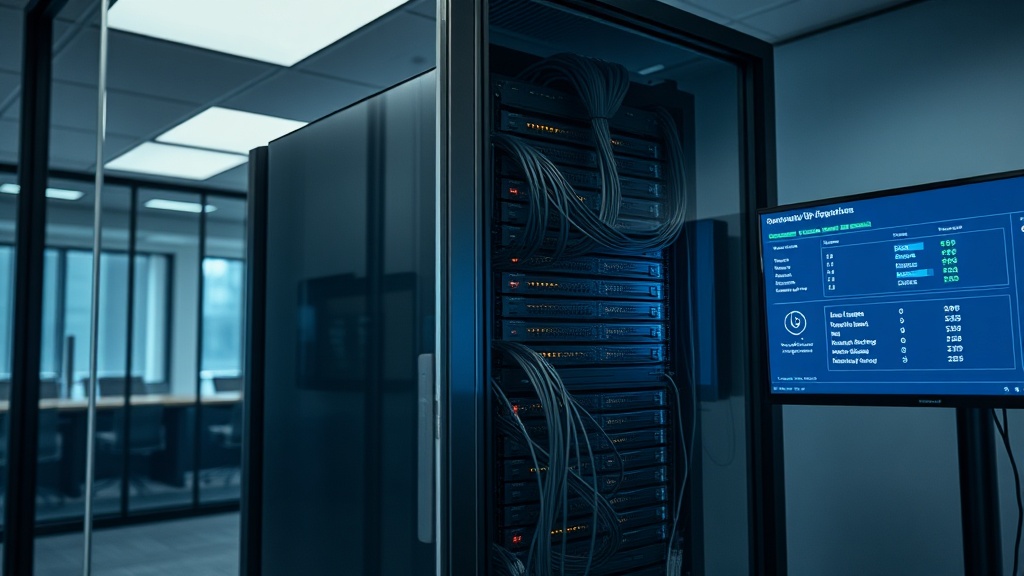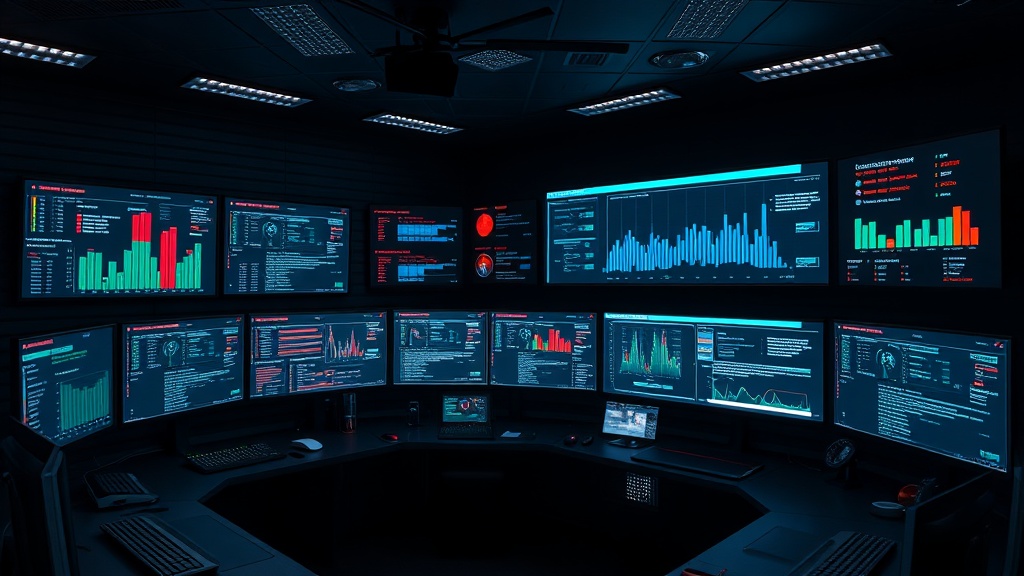Address
304 North Cardinal St.
Dorchester Center, MA 02124
Work Hours
Monday to Friday: 7AM - 7PM
Weekend: 10AM - 5PM
Address
304 North Cardinal St.
Dorchester Center, MA 02124
Work Hours
Monday to Friday: 7AM - 7PM
Weekend: 10AM - 5PM

Implementing a Security Information and Event Management (SIEM) solution through a Managed Security Service Provider (MSSP)? It’s a big step. Not just technical, strategic. A mix of powerful tech, experienced people, and smooth integration. Done right, it’s transformative. Done wrong, it’s chaos.
From our own journey through MSSP SIEM deployment, one thing became crystal clear. With the right process, organizations can dramatically boost their threat detection, response times, and overall confidence. So here’s what we’ve learned. What works. What doesn’t. And how to get it right.

Security monitoring isn’t something anyone can just switch on and walk away from. When organizations start thinking about SIEM, they’re basically deciding to change their entire security game plan. Industry data backs that up, in large companies, more than 56 percent handle over 1,000 alerts per day, and many report their alert volumes have doubled in the last five years (1).
A lot of companies hit this crossroads sooner or later: Do they want to handle SIEM themselves, or should they team up with an MSSP? The question might look simple on paper, but there’s more to it than just dollars and cents.
Setting up SIEM means dealing with a system that needs constant attention – we’re talking about 24/7 monitoring, tons of alerts that need checking, and people who know what they’re doing (and those people aren’t cheap or easy to find these days).
From what we’ve seen in the field, getting an MSSP on board actually makes things run smoother. They’ve got the tools, they’ve got the people, and they’ve been doing this for years. No need to reinvent the wheel when someone’s already got it rolling perfectly.
Source: BitLyft
MSSPs aren’t just vendors. They’re an extension of your team. They take on the hard stuff, watching logs, spotting threats, responding when something looks wrong. They help deliver the strategic value of investing in managed services without sacrificing agility or oversight.
This frees you up. Let your team focus on what they do best. And it puts your security in the hands of specialists who live and breathe this work.
Let’s talk about the benefits. First, the talent. Talent shortages are real, as of 2024, the global cyber workforce gap was 4.8 million people, and 59 percent of organizations report trouble hiring security staff for their own SOCs. MSSPs help fill that gap with expert teams ready to go.
In fact, 59% of cybersecurity professionals say those skills gaps have directly affected organizational security, and 64% consider them more disruptive than actual staffing shortages (2).
And let’s be real, it’s often more affordable than trying to build the same capabilities in-house. You avoid big hiring pushes and huge tech investments.
Going solo? You’ll need to invest heavily. Not just in tools, but in smart, experienced people who know how to use them. And that cost doesn’t go away. It scales as you grow. With an MSSP, you get a more predictable spend. Budgeting becomes easier.
In-house teams can struggle with blind spots. Different departments, different tools, inconsistent visibility. But an MSSP usually operates from a centralized SOC. One command center, watching everything. That kind of core service leads to faster, smarter responses. Fewer silos, better coordination.
Let’s not kid ourselves. Compliance is a beast. But a necessary one. Whether you’re in healthcare, payments, finance, or another regulated field, HIPAA, PCI-DSS, GDPR, they all come with weighty obligations.
An MSSP helps lighten that load. They’ve seen it all before. They’ll help you hit the marks.
Your SIEM needs to do more than log stuff. It should act. Fast. That means catching threats as they unfold, and having a solid plan ready to go. With the right MSSP, you won’t just detect problems. You’ll handle them, quickly, confidently.
You can’t fix what you can’t see.That’s why visibility matters so much. A good MSSP brings clarity. You’ll get insights you never had before. Weak spots, emerging threats, patterns in the noise. It all becomes clear.
They need to be watching. Always. Around-the-clock monitoring, fresh threat intelligence, fast escalation when something feels off. These aren’t nice-to-haves. They’re the minimum.
Also, dig into their incident response process. How do they handle alerts? How fast do they react? You want speed and clarity.
This isn’t one-size-fits-all. You might need a cloud-hosted setup, easy to manage, endlessly scalable. Or maybe on-premises, where you have full control. Some go hybrid.
And if you serve multiple clients? Make sure your SIEM supports multi-tenancy. It’s critical for keeping data clean and separate. Also, double-check how well the MSSP integrates with your current systems. You don’t want to rebuild everything from scratch.
In our journey implementing MSSP SIEM solutions, we’ve learned that a structured approach is essential for success. By focusing on clear objectives, thorough planning, and ongoing optimization, organizations can significantly enhance their cybersecurity posture.
If you’re considering MSSP SIEM implementation, remember to take a thoughtful approach and leverage the expertise available to you. The world of cybersecurity is ever-changing, and staying ahead requires commitment, collaboration, and a proactive mindset. We urge you to embrace the process and invest in your security future.
Implementing MSSP SIEM isn’t just a tech decision, it’s a mindset shift. It means moving from reactive to proactive, gaining visibility, and putting clarity over chaos. Yes, the process can feel complex, but with the right approach, it becomes a powerful step toward stronger security.
When you define your goals, choose the right MSSP, and stay involved throughout the process, the rewards are real. You’re not just getting a tool, you’re getting insight, confidence, and a skilled team that’s got your back 24/7.
But remember, this isn’t set-and-forget. Security evolves. So should you. Keep improving, stay curious, and always adapt. At its core, MSSP SIEM is about resilience. It’s about building a security posture that grows with your business. Thinking about taking the leap? Do it wisely, but do it.
Need help starting strong or sharpening your current setup? Our expert consulting services are built for MSSPs like yours, focused on simplifying operations, improving toolsets, and boosting visibility. Let’s make your security future-ready.
SIEM data encryption protects sensitive log data, while SIEM log aggregation pulls everything into one place for better oversight. Together, they make it easier to meet cybersecurity compliance standards and support compliance reporting during audits or regulatory checks.
Security event enrichment adds context, like user details or threat intel, to raw logs, making it easier to spot malware detection patterns. It works well with security automation to trigger faster, smarter responses in your security operations center.
Incident prioritization helps MSSPs respond to the most critical threats first, keeping response times within agreed MSSP SLA management terms. Clear priorities also improve service provider collaboration, ensuring everyone’s on the same page when things go sideways.
Threat landscape analysis helps you understand which attacks matter most to your business. That insight shapes SIEM notification setup and supports stronger security event management, so alerts are relevant and actionable, not just noise.